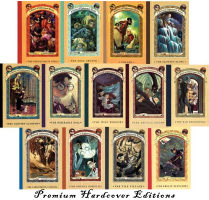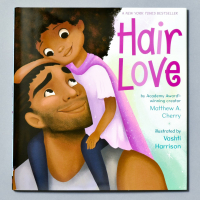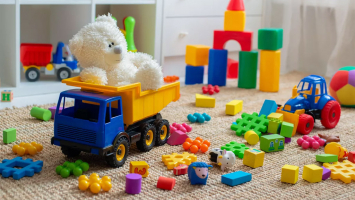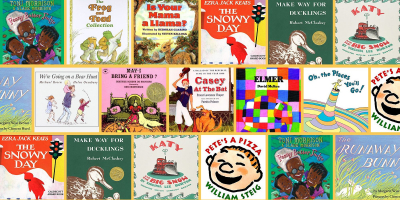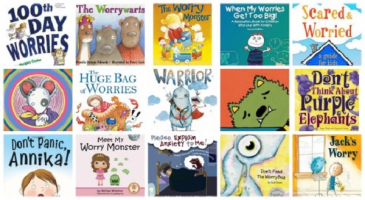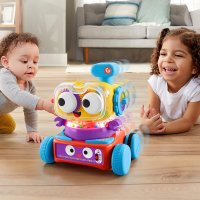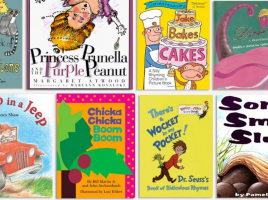Top 15 Best Children's Math Books
Logical thinking is the foundation of all success, a child who is good at math from a young age will have the most comprehensive thinking skills. Early ... read more...exposure to Mathematics will develop children's intelligence and increase concentration, form reasoning thinking, solve logical problems, develop outstanding IQ, and create a good premise for the future. But math is a rather dry subject, the pressure makes children not want to study, only study for a while, then give up, and not focus. How to help children learn math without making them feel pressured? The following children's math books will help solve those problems. Toplist would like to introduce you to refer to the best children's math teaching books to help develop the best thinking.
-
Counting Crocodiles is a counting book, but it is interesting because it has a story that rhymes are used a lot. The story of a monkey who always eats lemons sees a banana tree on another island and uses a herd of crocodiles to get sweet bananas is interesting. Most of the counting books do not include stories, which visualized numbers by repeatedly counting a smart monkey in the process of achieving his goal using crocodiles. In the illustration, different activities or various types of crocodiles appear to induce children to count. In particular, the illustration in which all crocodiles appear is vibrant and splendid, which is likely to attract children's attention. This picture book makes young children familiar with numbers by inserting animals into illustrations.
This is a delightful and humorous children’s picture book that would engage children and adults alike. Not only is this a counting book with an interesting twist, but it also includes some advanced vocabulary that typically would not be found in other counting books. This is an entertaining and cute book that I would highly recommend for young readers.
Link to buy: www.amazon.com/Counting-Crocodiles-Judy-Sierra/dp/0152163565
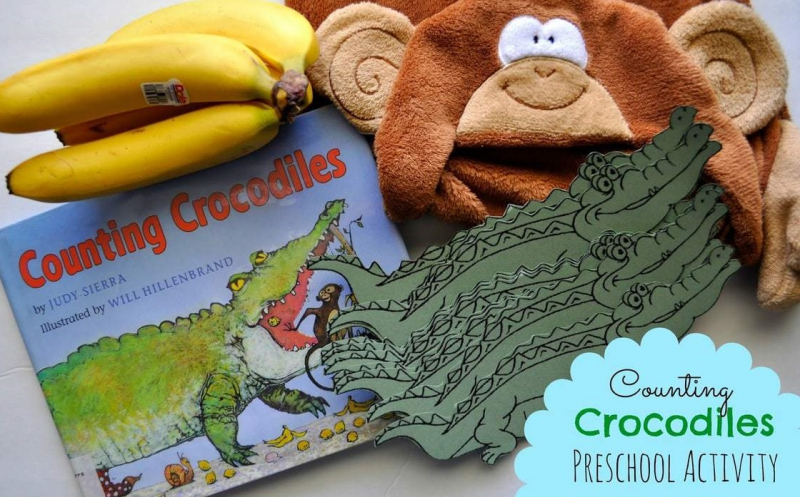
Counting Crocodiles 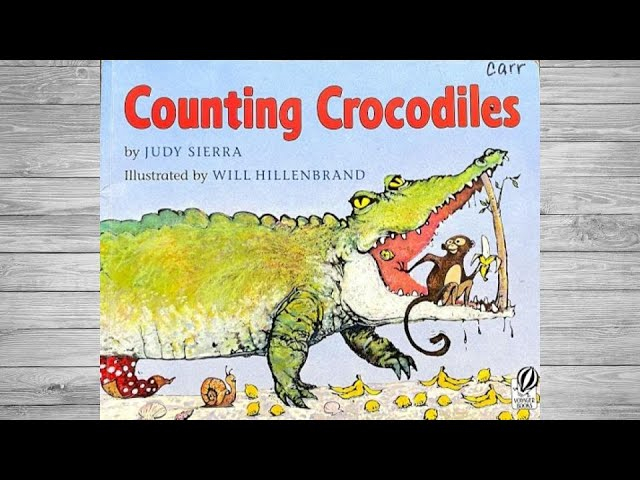
Counting Crocodiles -
100 Bugs!: A Counting Book is a delightful adventure and a clever learning tool for kids. All in one! The story begins with two children waking to an exciting day filled with bug-exploring and counting those bugs along the way. From dragonflies to fireflies, readers will be mesmerized by enchanting, life-like illustrations of wildflowers and farm animals. As a bonus, there's even a counting exercise at the end. This book may be so much more than you had expected.
This is an excellent book for teaching math concepts, specifically adding numbers to make 10 and counting by tens. Added to that, the rhyming text is enjoyable to read aloud. You can imagine many fun interactive read-aloud and lesson plan possibilities with this book. But wait, there's more! The back matter at the end of the book provides information about the uniqueness that is featured in this book. Additionally, Suzanne Kaufman's illustrations are vibrant and fun.
Link to buy: www.amazon.com/100-Bugs-Counting-Kate-Narita/dp/0374306311
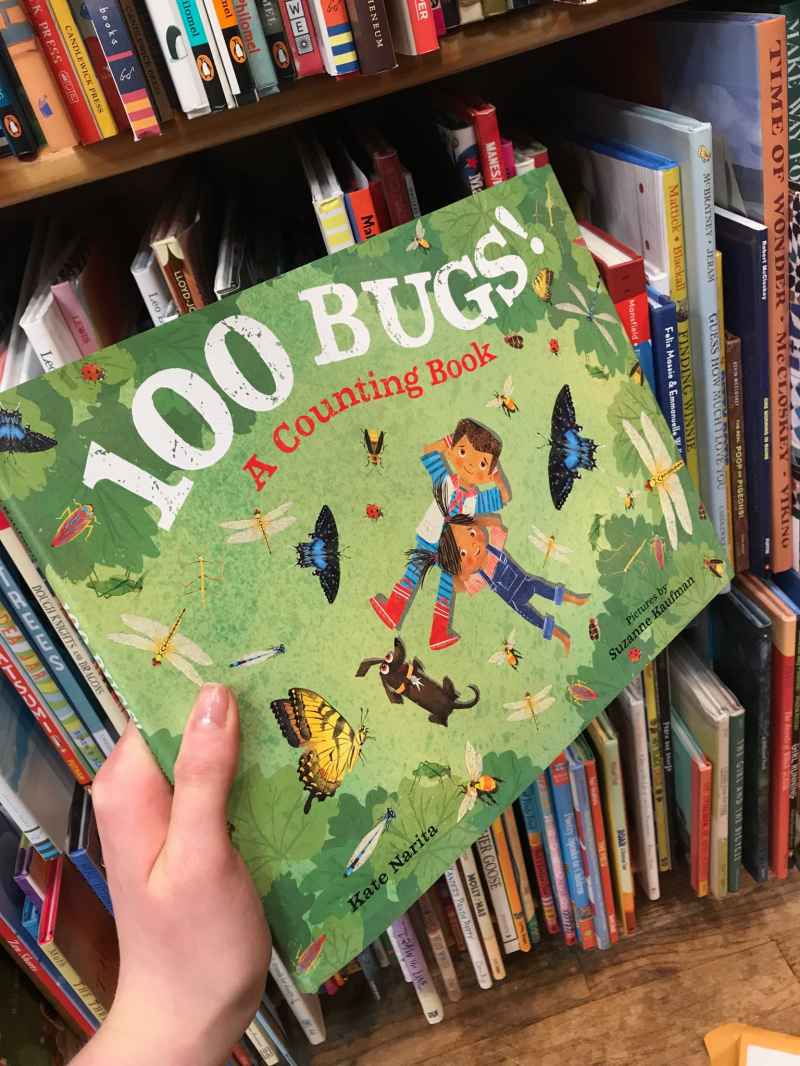
100 Bugs!: A Counting Book 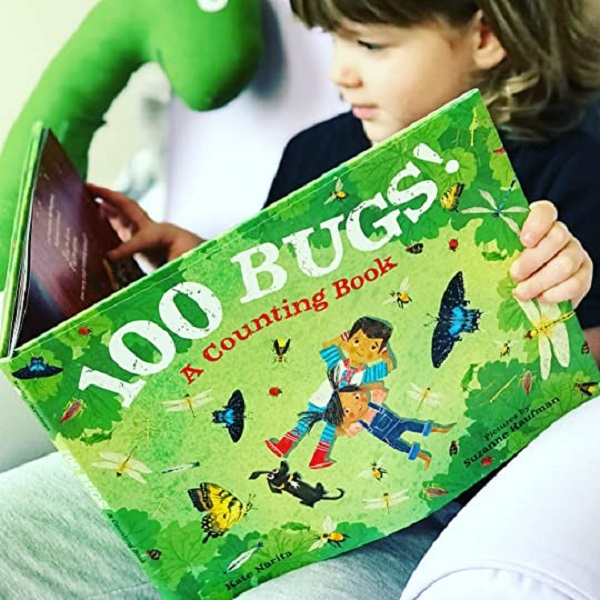
100 Bugs!: A Counting Book -
Sir Cumference and the First Round Table draws from the romance of King Arthur legends, spinning out a rather shallow story in order to introduce basic math concepts. In this volume, King Arthur's knights need to meet together to plan their defense against their enemies, but they cannot hear each other from both ends of their rectangular table. Sir Cumference, together with his wife lady Di (from the town of Ammeter), apply principles of geometry to change it to several new configurations, but their attempts are stymied until their son Radius spots a fallen tree that is exactly the right shape.
Neuschwander's writing is clear and well-paced, and the illustrations are attractive enough that many children may spot the book and ask for it to be read aloud. As a dressed-up math lesson, complete with mnemonic devices for recalling math terminology, it's a clear winner. If you like this book, you'll probably enjoy others in the series too.
Link to buy: www.amazon.com/Cumference-First-Round-Table-Adventure/dp/1570911525
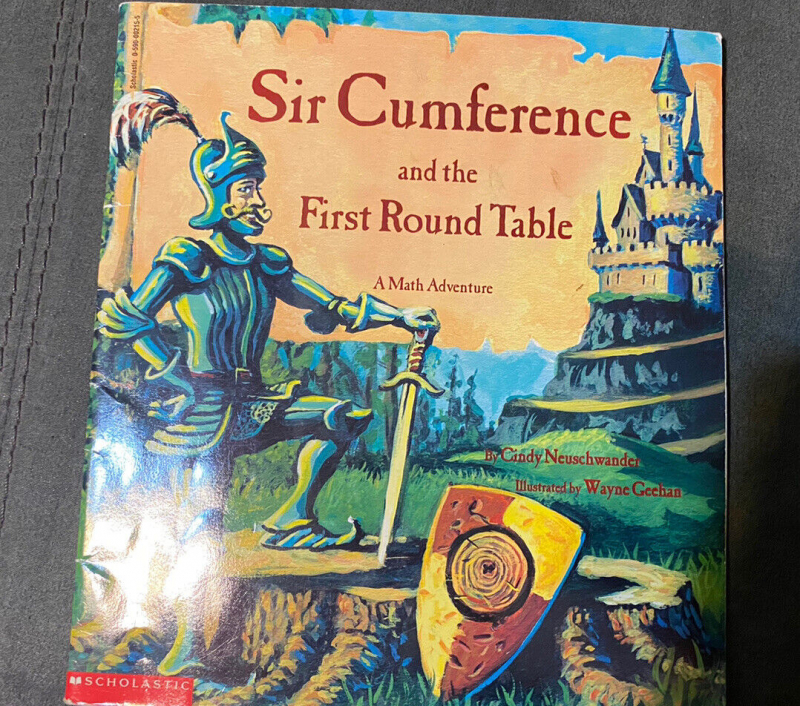
Sir Cumference and the First Round Table 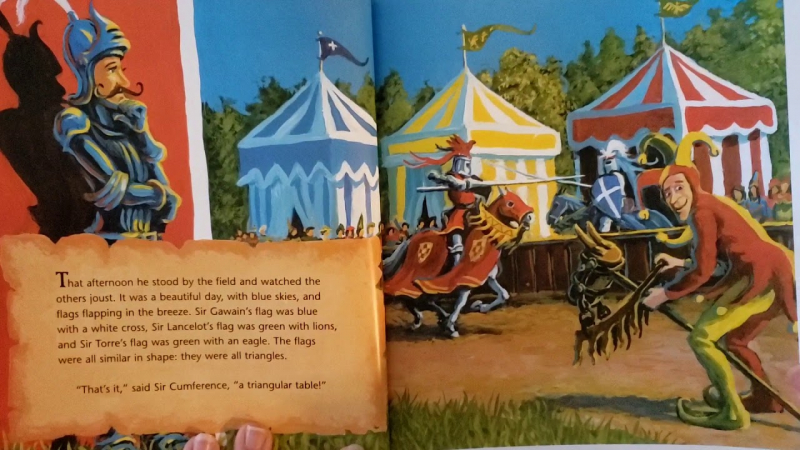
Sir Cumference and the First Round Table -
Just as the name suggests, "Fractals, Googols, and Other Mathematical Tales" is a collection of interesting stories, each focusing on a different mathematical concept. With this book, kids will explore math in an amusing and entertaining way while learning about real numbers, exponents, dimensions, the golden rectangle, and many other math topics.
The numbers in this book tell stories that help the reader remember how they are used. The fictional stories are interesting and often humorous, such as when Penrose, the cat, meets Lo-shu, the tortoise, and learns about magic squares. There are several puzzles in the book and the answers are included on the last few pages. Although targeted as a book for children of all ages and backgrounds, it recommends this book for children above the age of 7 or 8, so they can truly understand the concepts behind the stories.
Link to buy: www.amazon.com/Fractals-Googols-Other-Mathematical-Tales/dp/0933174896
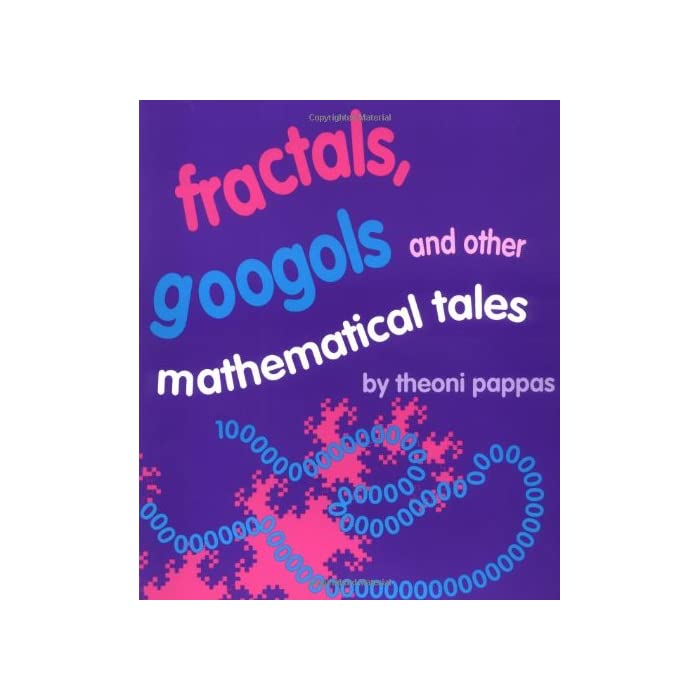
Fractals, Googols, and Other Mathematical Tales 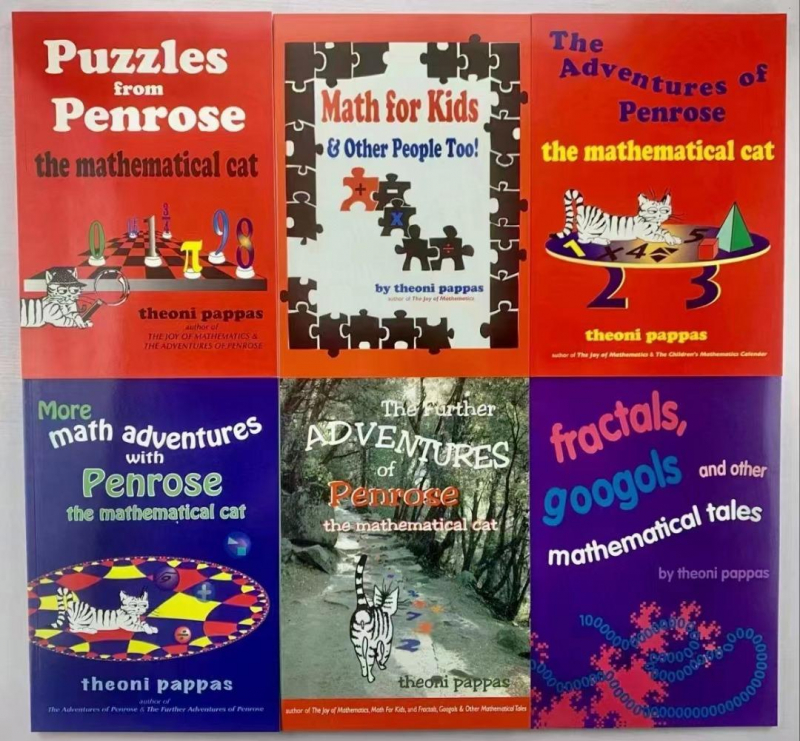
Fractals, Googols, and Other Mathematical Tales -
Children travel from Samos to Alexandria in another adventure novel, where they meet Neferheperhersekeper, a builder who will instruct them on the proper angle. "What’s Your Angle Pythagoras?" is great for teaching kids the Pythagorean Theorem, how to measure angles, and various kinds of triangles. With this book, children won't be questioning "But, where will I use this?" as it contextualizes geometry with engrossing tales about the construction of cities and also holds their interest with clever wordplay and humorous puns.
This is a book for children around the ages of 7 to 10 years old and useful for students from the 3rd to 5th grade. If your child (or your students) are not mathematical and stories help you understand abstract concepts, this book might be a good introduction/help for those starting Geometry. In any event, it is an enjoyable read.
Link to buy: www.amazon.com/Whats-Angle-Pythagoras-Charlesbridge-Adventures/dp/1570911509
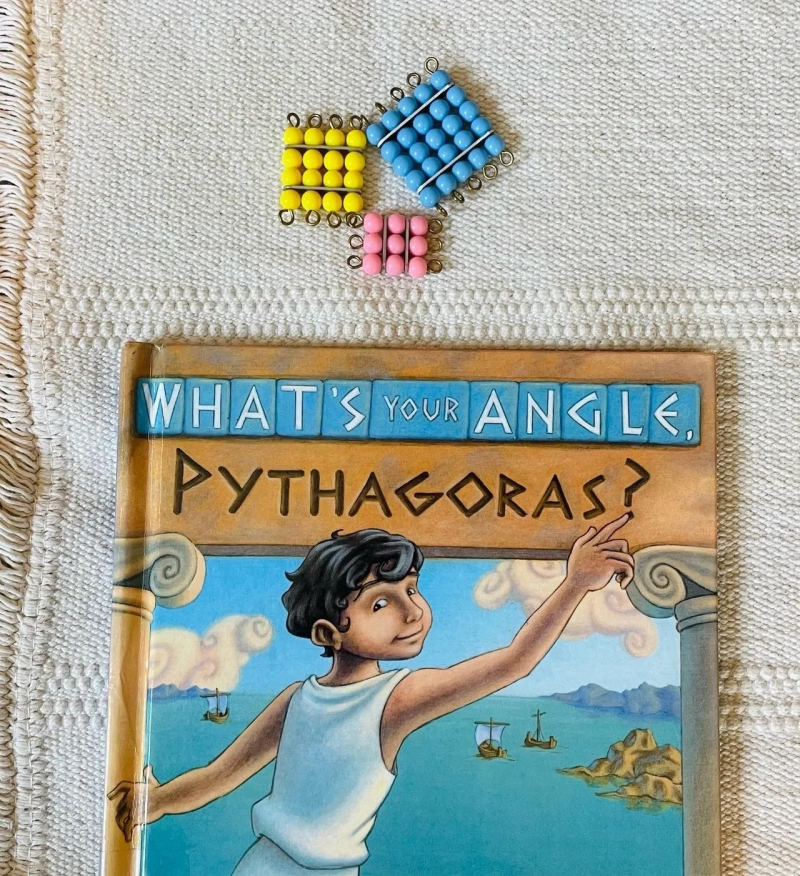
What’s Your Angle Pythagoras? 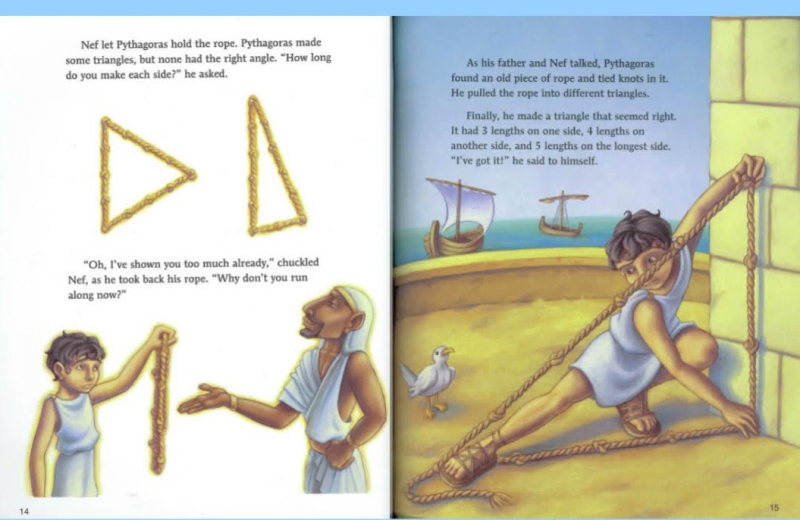
What’s Your Angle Pythagoras? -
Although you may assume that percentages, decimals, and fractions are difficult topics that could befuddle young readers, this book manages to make them all interesting and entertaining. The plot centers around a county fair where children will have the chance to improve their batting average in the arcade or split the winning prize equally with their buddies. Math teacher David Adler penned the book in reaction to his success in debunking the myth that fractions are difficult in the classroom.
"Fractions, Decimals, and Percents" is for children from the age of 6 to 9 years old or students in the second to fourth grade. However, keep in mind that before introducing this book, kids need to know how to count and perform basic arithmetic operations. The author links real-world experiences to those mathematical concepts using a county fair setting. Illustrations are nice for a book on math concepts: bright, fun, and clear. This book is interactive because within the text are games and problems for your child to be able to work through and solve and also includes the answers in the back of the book.
Link to buy: www.amazon.com/Fractions-Decimals-Percents-David-Adler/dp/0823423549
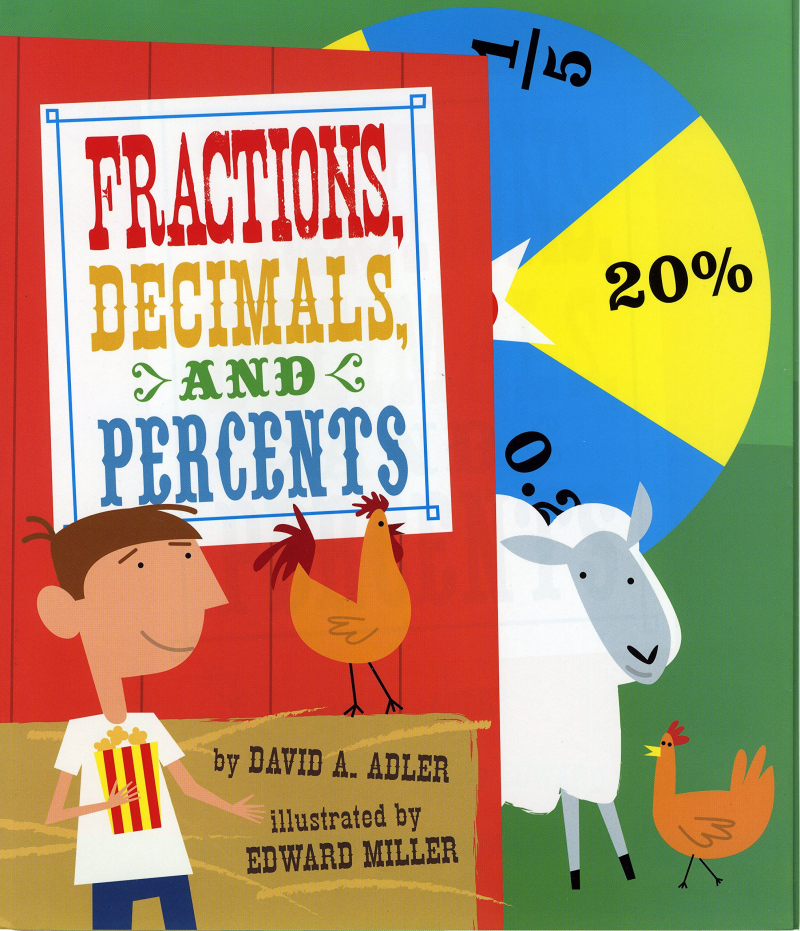
Fractions, Decimals, and Percents 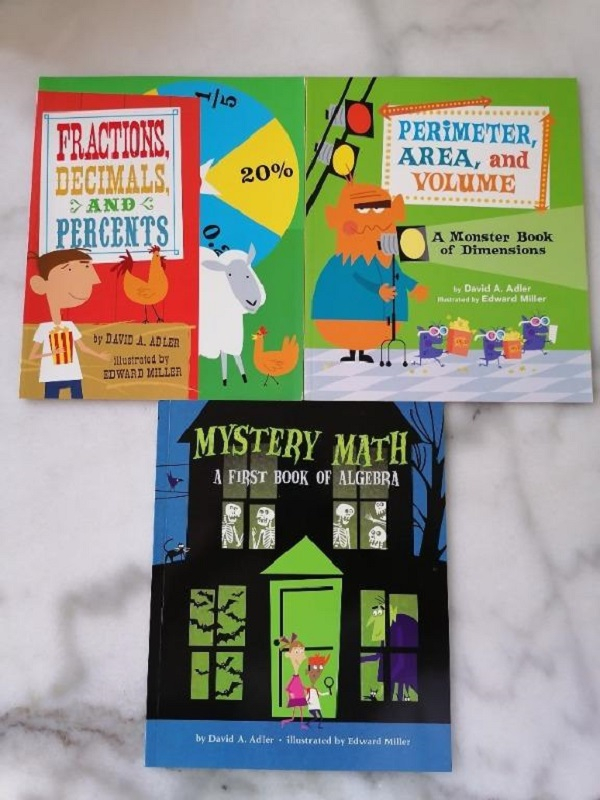
Fractions, Decimals, and Percents -
Ethan is a young boy who one day woke up with a cat named Odds on his head. The cat wouldn’t leave the boy alone until he played the game of probability. This is a fun story that teaches the concept of probability in a practical and easy-to-understand way. The fact that there's a cat on the boy's head is very humorous and the challenge he is given motivates him to succeed so that he can go to his soccer game (without a cat on his head). The illustrations are entertaining and very expressive. You will also like the additional information provided at the back of the book about the pioneers in probability (with illustrations of men with cats on their heads).
“A Very Improbable Story” is a great read for children around the ages of 7 to 10 or students from the second to the fifth grade. Books like these help show how math skills are essential in everyday life, and that math can also be fun. You and your child will really enjoy reading this story together.
Link to buy: www.amazon.com/Very-Improbable-Story-Charlesbridge-Adventures/dp/1570918724
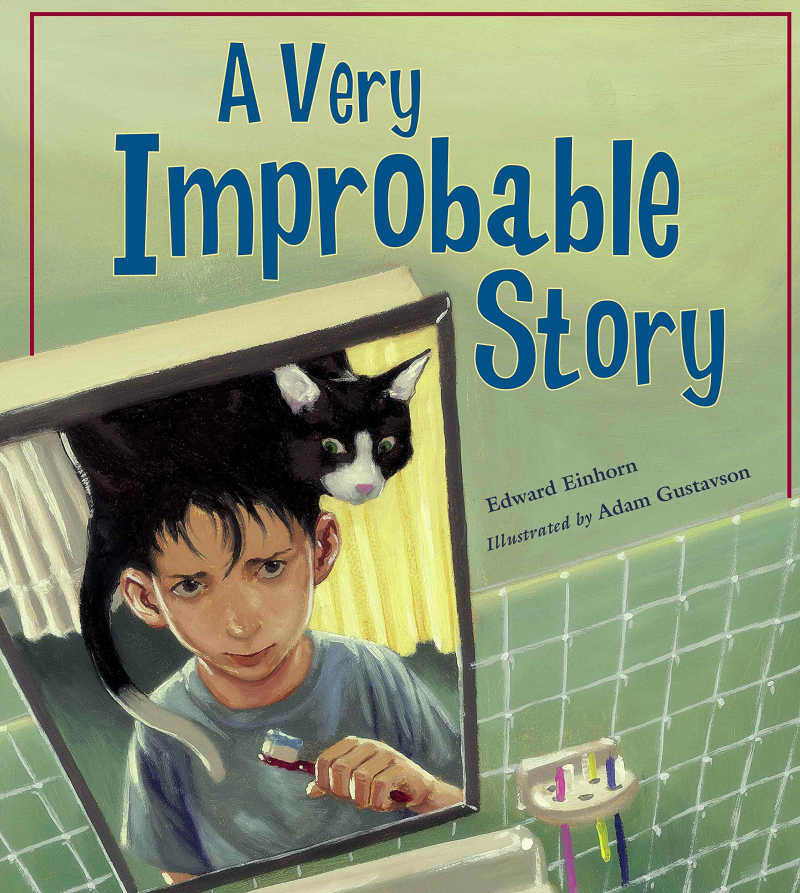
A Very Improbable Story 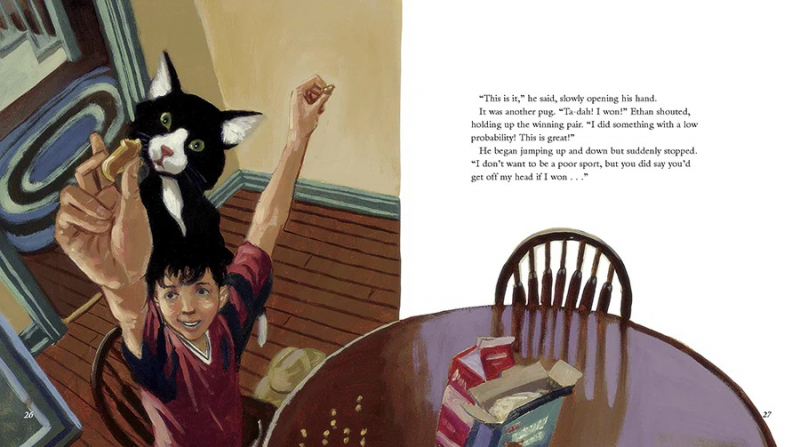
A Very Improbable Story -
Another book, another math concept! This time, you got a chance to teach kids how to apply concepts like measurements to solve problems. Johnny Ball’s book “Why Pi?” is a fantastic story about the importance of understanding and using math in everyday life. The book is filled with fun games, puzzles, brainteasers, and fun facts that make kids smile.
The beginning of the book was excellent - talked about really interesting math history, such as how Egyptians used math to measure their fields, who came up with different basic mathematical principles, and how they affect, etc. The last 1/4 or so of the book was anti-climatic - it was just a discussion of the various different measurements out in the world today. If you skip the last 1/4, you won't miss much. The rest of it though is a great read for young and old alike. This is another book for kids of all ages, but it is especially useful for kids who’ve already started learning maths in school. This way, they’ll see how the concepts they’ve just learned are used in daily life.
Link to buy: www.amazon.co.uk/Why-Pi-Math-Applies-Everyday/dp/0756664772
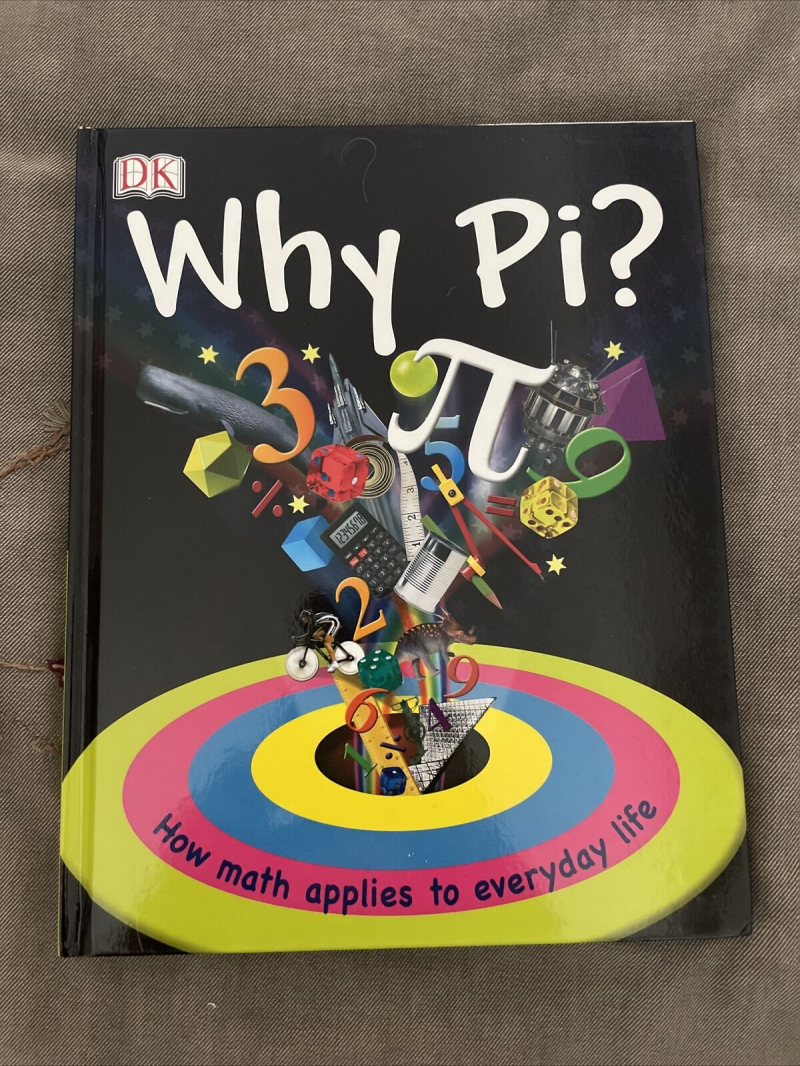
Why Pi?: How Math Applies to Everyday Life 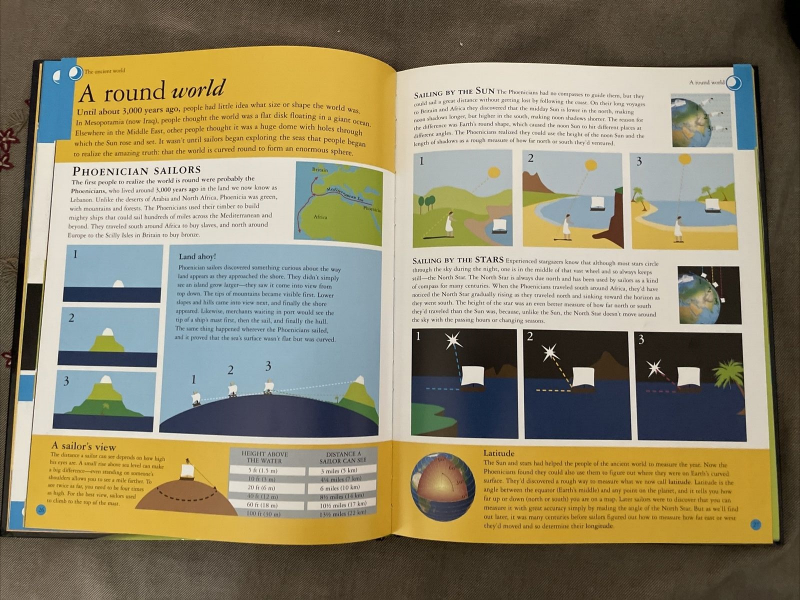
Why Pi?: How Math Applies to Everyday Life -
Calculus, or the study of continuous change, is one of the most notorious topics in math. However, you should believe that with the right math book in hand, even calculus can draw kids to math. This is especially true when having an author like Orlin, who uses "Change Is the Only Constant: The Wisdom of Calculus in a Madcap World" to show you how much calculus is misunderstood. With humor and cute “bad” drawings, he teaches kids that calculus is just another language to express the things they face daily – in this case, change. If your child is ready to learn calculus, don’t think twice about buying this wonderful book.
Brief stories in the book make mathematical functions and theories seem like elementary school calculations. The book proves that math doesn’t have to contain difficult formulas that only geniuses understand, but rather explained throughout stories, that math in fact is more comprehensible than many think.The main focus of the book is calculus, so differential arithmetic and integrals. Integrals, limits, functions, and derivatives tell you more about your daily life than you think.
Link to buy: www.amazon.com/Change-Only-Constant-Wisdom-Calculus/dp/0316509086
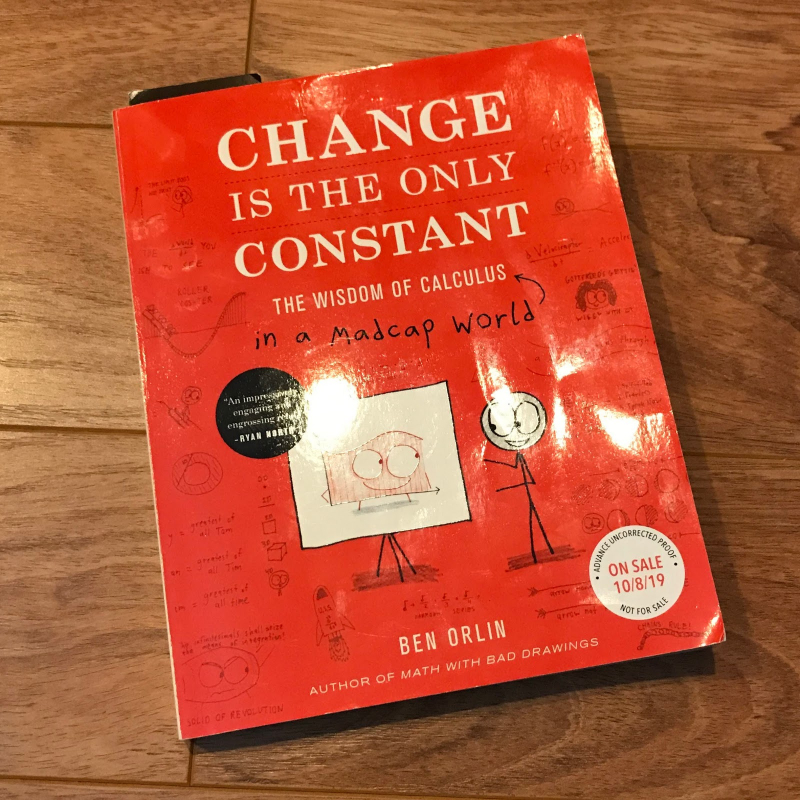
Change Is the Only Constant: The Wisdom of Calculus in a Madcap World 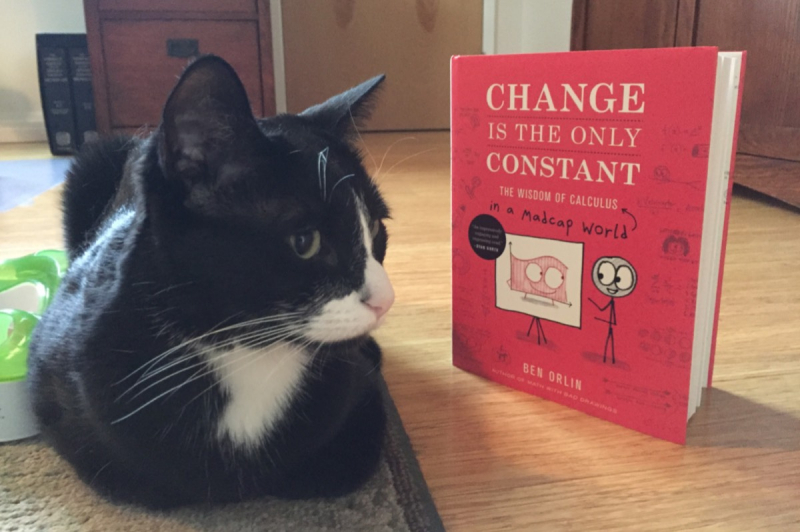
Change Is the Only Constant: The Wisdom of Calculus in a Madcap World -
It is absolutely marvelous book! It uses real-life scenarios to teach math in both English and Spanish (a real plus in my school district). Each answer is explained in easy-to-read language. For students who don't understand "why" they have to learn math, this book is an excellent example of why math is SO important. Presenting the problems as "mysteries" is an added draw.
The first math book for kids in this section is Eric and Natalie’s famous mystery book with stories that are only solvable with math! To keep kids engaged, the stories are short and very easy to follow, while the brainteasers are entertaining and help kids develop their logic and reasoning skills. Moreover, all the stories are relatable, which means they allow kids to draw connections with the real world and see how math beyond arithmetic operations is used practically. Short Mysteries You Solve with Math! (One Minute Mysteries) is most suited for kids over 10 years old, but if your little one has a passion for math, you can give it a try as you're sure you won’t be disappointed.
Link to buy: www.amazon.com/One-Minute-Mysteries-Short-Solve/dp/0967802008
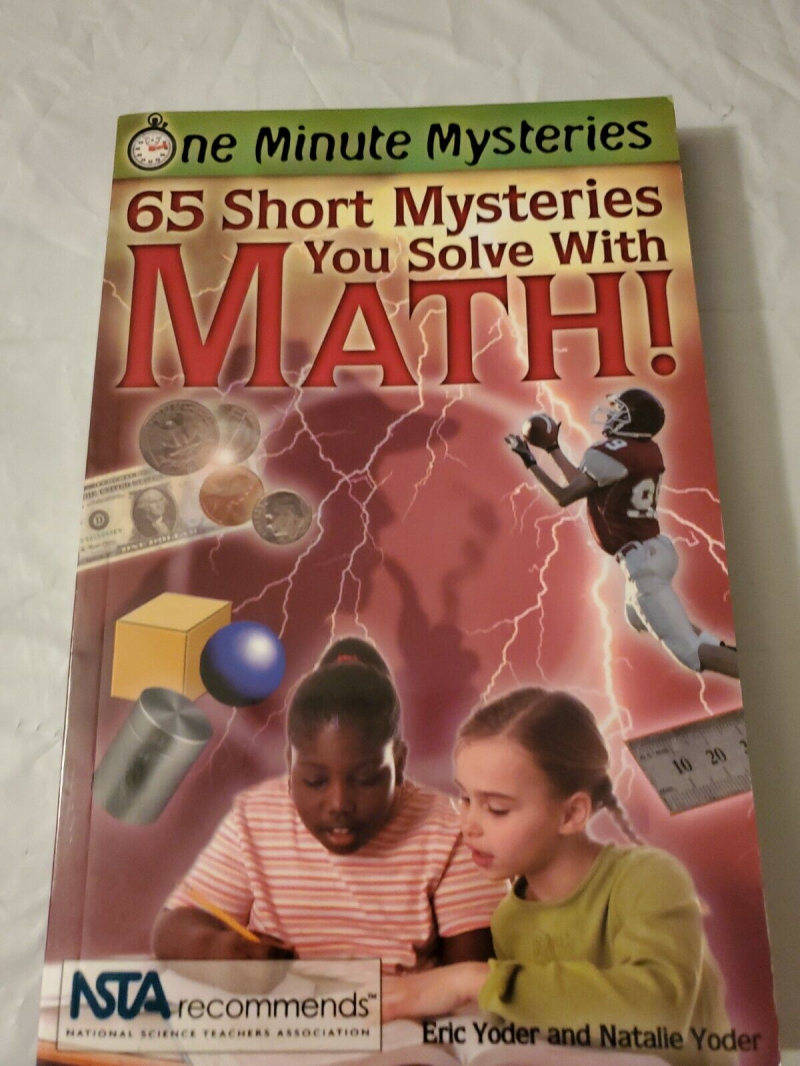
Short Mysteries You Solve with Math! (One Minute Mysteries) 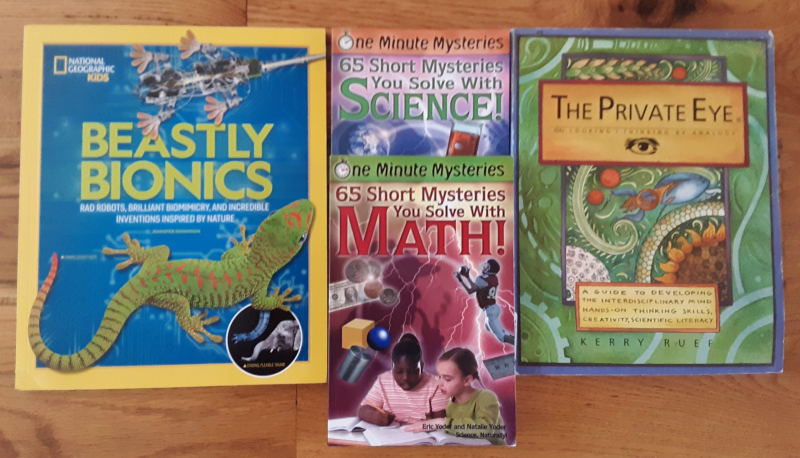
Short Mysteries You Solve with Math! (One Minute Mysteries) -
When it comes to math books for kids, A Mind for Numbers: How to Excel at Math and Science is another must-read! Not because it unravels another complex math concept extraordinarily well, but because it teaches kids one of the most important things, and that is – learning how to learn! You won’t deny that math or science are challenging topics, but with the right tools and effective learning strategies, the challenges are going to be a motive for trying harder. Pick up this math book for kids and students to help them tackle elaborate math problems with ease.
This book is a book on how to excel at math and science -- even if your child previously flunked them. However, it is also much more. Dr. Oakley’s book ultimately helps children enjoy what they do in a way they never could before when I procrastinated and was stressed out because of Math. All children and students would benefit from building an effective strategy for learning advanced math and science concepts. This book was a life-changer for your kid.
Link to buy: www.amazon.com/Mind-Numbers-Science-Flunked-Algebra-ebook/dp/B00G3L19ZU
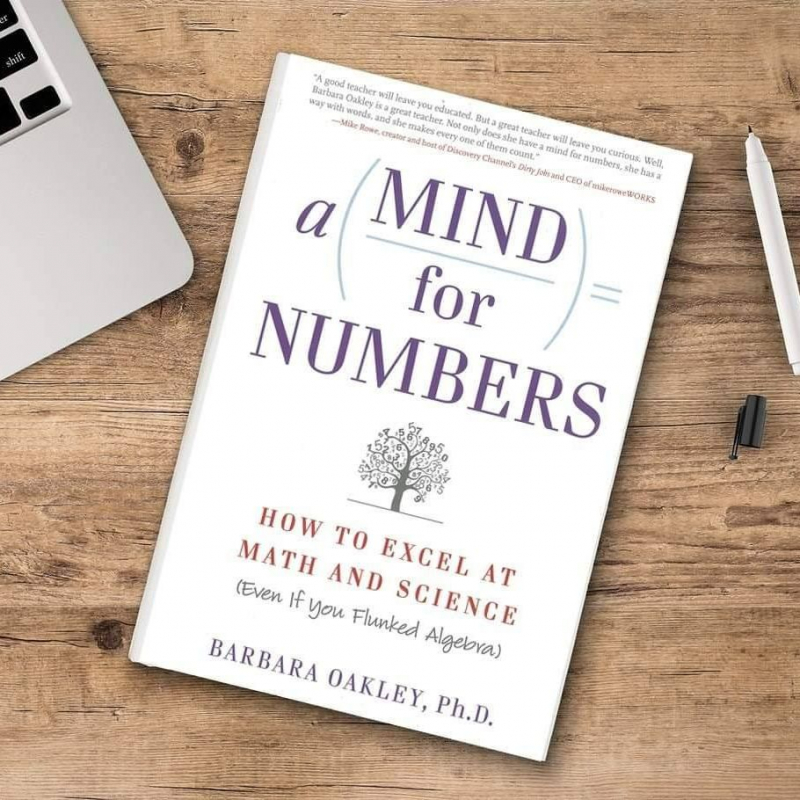
A Mind for Numbers: How to Excel at Math and Science 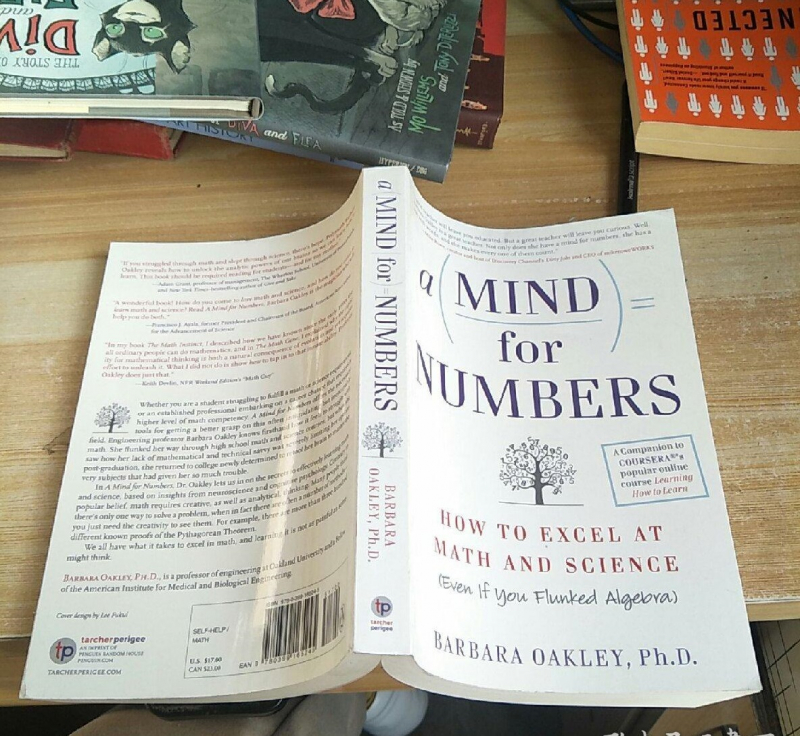
A Mind for Numbers: How to Excel at Math and Science -
Next, Matt Parker’s bestseller is titled “Humble Pi” The reviews for this book speak for themselves, but a common theme is its captivating nature. Turns out that pi's not as humble as one could imagine. That many people actually did die as a result of many of the errors is tragic and definitely takes most of the fun from the comedy. Put the book name aside, it's a magnificent read into how maths goes bump in everywhere.
Kids won’t be able to put this book down, which is very understandable considering Parker is a stand-up comedian and math lover. More specifically, he dedicates his time to exploring all sorts of mishaps (from trivial to very serious) that have happened because of math errors. Fortunately, Parker’s hobby is a great way to show kids just how important math is in the real world and how much people rely on it. “Humble Pi” is a fun math book that kids of all ages would enjoy, but in order to understand the concepts behind the stories, Toplist recommends it for kids above 10 years old.
Link to buy: www.amazon.com/Humble-Pi-When-Wrong-World-ebook/dp/B07R8QSXYB
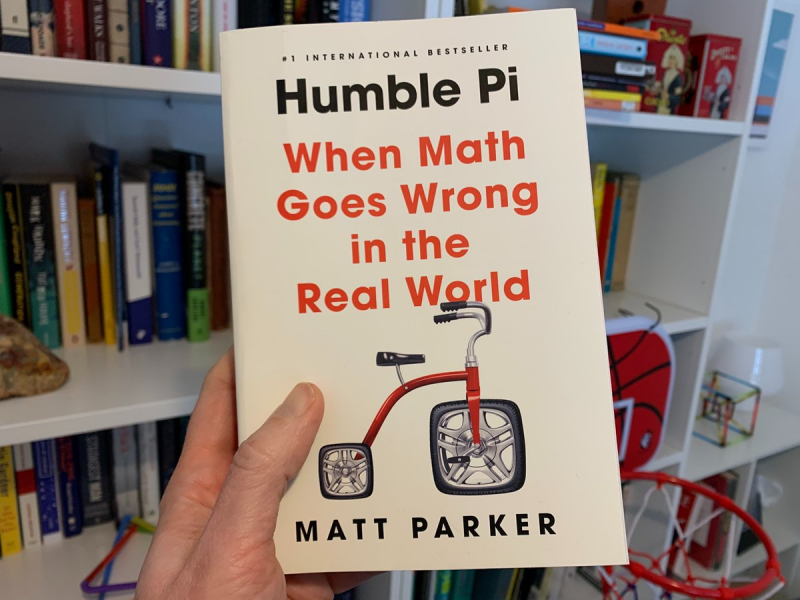
Humble Pi: When Math Goes Wrong in the Real World 
Humble Pi: When Math Goes Wrong in the Real World -
It is impossible when starting this section without talking about Berne’s “On a Beam of Light”. With a perfect 5 rating on Amazon, it’s a perfect book for children because it lets them identify with a central figure in mathematics, Albert Einstein, as a curious, imaginative, young boy who questions everything around him and grows up to become one of the most brilliant minds in history. More than that, people also have compliments for the writing style and tone of voice that captures the reader’s attention.
This book uses a perfect style of illustration - somewhat childlike and mirroring sketches and doodles like Einstein might have made when hammering out his theories - to depict biographical details from the life of Albert Einstein and packs a deceptively impressive amount of great information. The book like his comfortable baggy trousers, sweaters, and socklessness for thinking - into the small package of a picture book. Everyone! This is a book that should be available in every math classroom, and if it’s not, then as a parent you can definitely buy it for your child.
Link to buy: www.amazon.com/Beam-Light-Story-Albert-Einstein/dp/145215211X
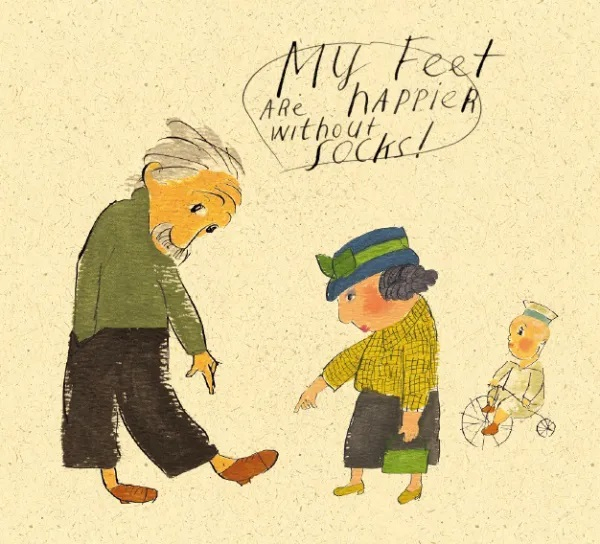
On a Beam of Light: A Story of Albert Einstein 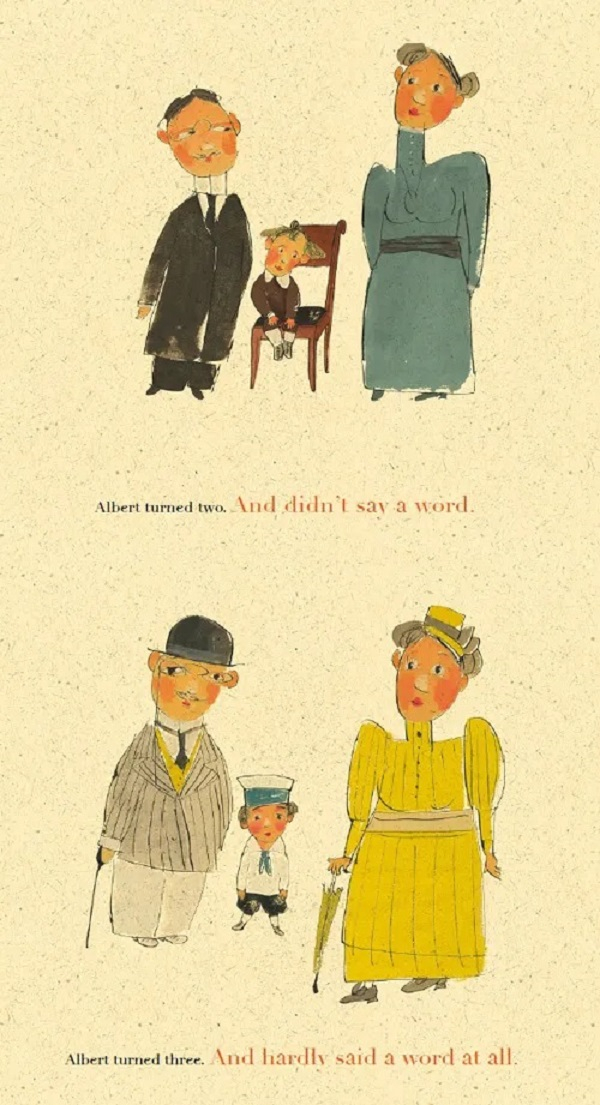
On a Beam of Light: A Story of Albert Einstein -
The Game by Leopoldo Gout sounds pretty fantastic with high stakes and a diverse cast of characters. Plus, it's can be a must-have item at your kid's library. The concept of the novel was compelling; during the first half of the story, your child just thinking about how much fun it would be to be recruited for The Game, or perhaps to know to code so well that I could hack into things.
Gout tells a story about three characters in their teenage years who meet at a competition called “Zero Hour” where 200 geniuses from around the world try to win the ultimate prize. However, for the main characters, life is a lot more complicated than it seems. It’s easy to get pulled into the world of these three young children as their life is incredibly exciting and filled with mysteries. Yet, math is what they share together. “Genius” is a book for teenagers who love to read mysteries and novels, but also enjoy math or might need a little bit more motivation while learning for their maths exams.
Link to buy: www.amazon.com/Genius-Game-Leopoldo-Gout/dp/1250045819
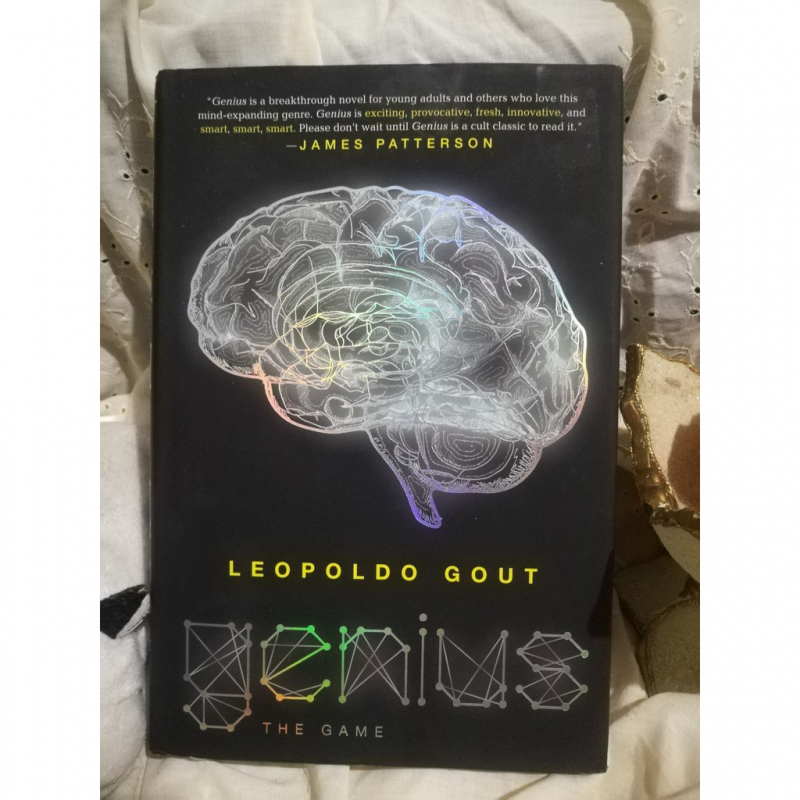
Genius: The Game 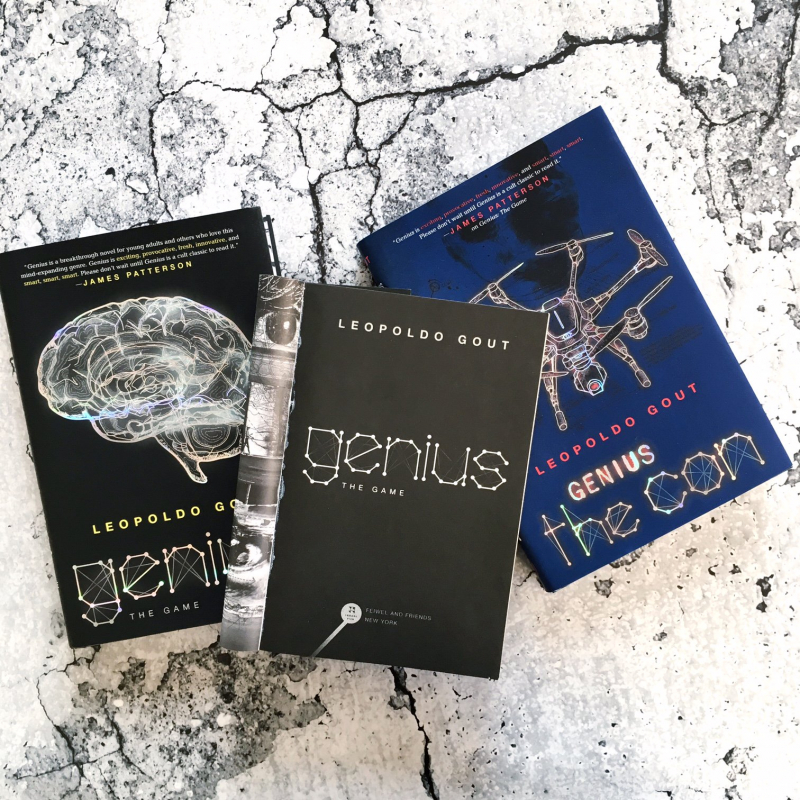
Genius: The Game -
All too often, math is presented formulaically and independently of exposition, with little to no contextualization or applicable real-world connection. Through common school mathematics, students often memorize and regurgitate formulas that seem meaningless in that they lack the necessary accompanying context to fully understand them beyond the surface level.
One big problem in math classes is that a lot of kids who get good grades are actually memorizing formulas instead of truly understanding the meaning behind functions. But maths is not about memory skills, it’s about logic, reason, and problem-solving. This clever math book for kids aims to address this exact problem. “Proofs in Competition Math” argues that learning proofs should be above anything else as it’s a way for kids to understand math’s importance and its elegance. This one is for students who need to contextualize and understand the meaning behind complex mathematical functions in order to understand them.
Link to buy: www.amazon.com/Proofs-Competition-Math-Alexander-Toller/dp/1798611201
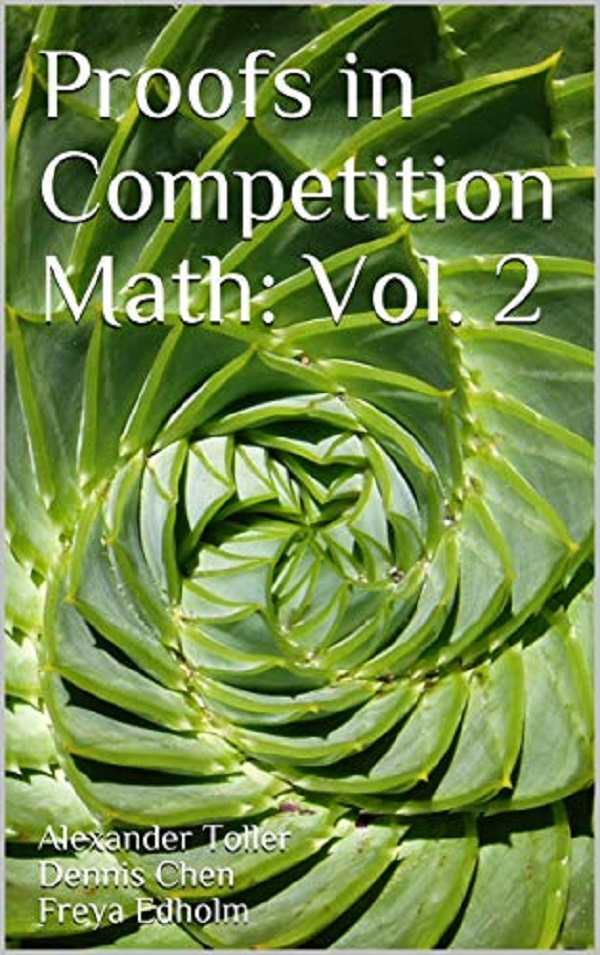
Proofs in Competition Math 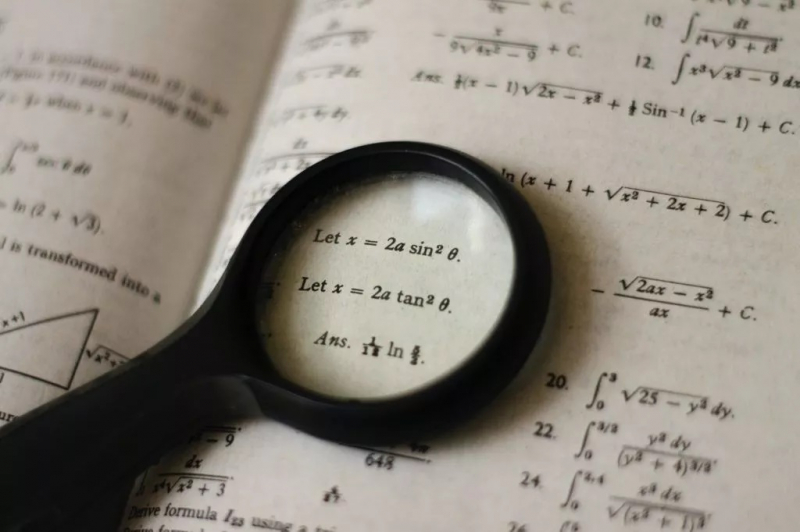
Proofs in Competition Math

















